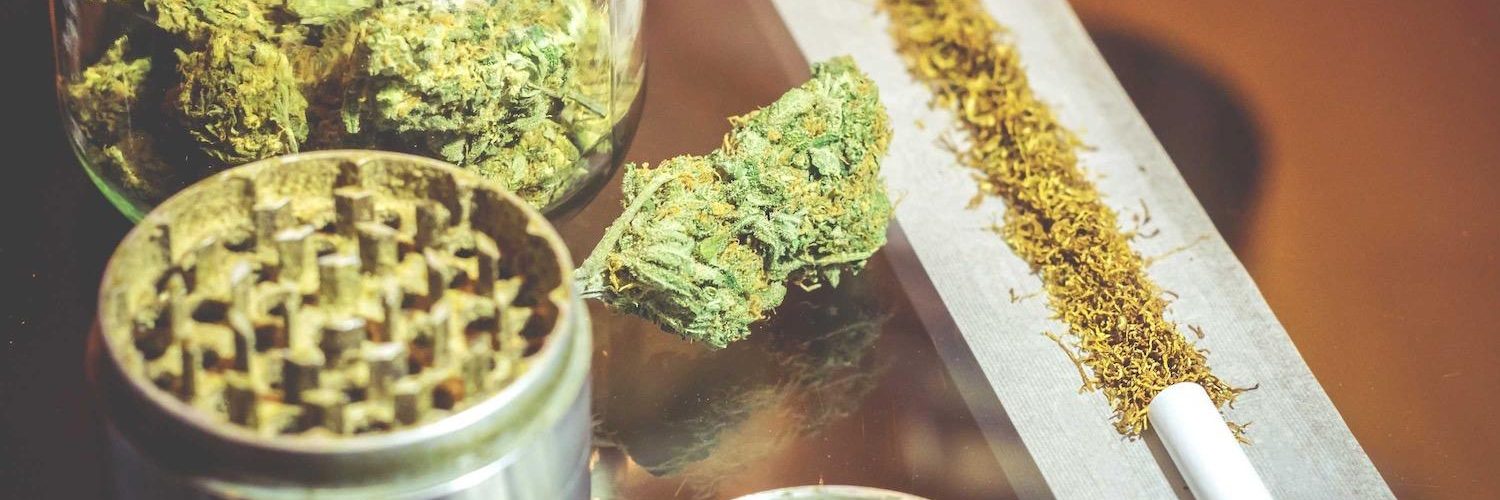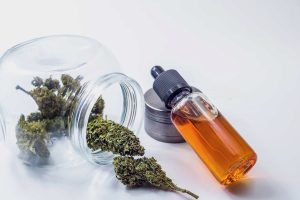- Fact-checked by Dr. Desiree Granados

As medical and recreational marijuana laws expand nationwide, individuals can legally have larger quantities of weed on hand. While this is excellent for managing the symptoms of your health condition, proper marijuana storage is a new concern for many people.
All forms of cannabis you can use come from an organic material that will break down over time. Learning how to store weed will extend the life of your purchases, saving you money and helping you comply with the applicable purchase limits.
Due to the federal ban and resulting illicit market, there are many inaccurate beliefs about the best way to store cannabis. The following discussion covers what happens to weed as it ages, factors that impact its longevity, and tips on storing your cannabis.
Why Should You Store Weed?
You should always store your marijuana properly and securely to ensure its quality, preserve its potency, and keep it safe. The high-grade weed available on the market has specific THC content. Correctly storing weed preserves its freshness and helps you know what to expect.
Improperly stored marijuana will lose its taste and quality over time because the cannabinoids and terpenes, the compounds that give weed its effects and flavor, deteriorate. Allowing your weed to degrade is essentially wasting money. You may be unable to replace your compromised marijuana due to state-enforced purchase limits.
Properly storing your weed also keeps it out of the hands of children, pets, and other adults. While there are no documented cases of a fatal cannabis overdose, indigestion by a minor will create a medical emergency and could jeopardize your right to purchase cannabis.
Does Weed Expire?
Weed does not expire the way food does. Unless the flower or dried cannabis has grown mold, it is unlikely to cause health problems. In most states, your cannabis will have a THC potency and best-by-date listed on the packaging.
Mold will look like small powdery white spots. If you’ve had your weed for an extended period, be sure to examine it closely before smoking.
Rather than spoiling, cannabis loses its potency and flavor over time. Researchers estimate that weed loses about 16% of its THC after one year when properly stored. The rate of degradation is faster for improperly stored weed.
Once cannabis passes its prime quality it will either have a harsh odor and taste or no odor at all. As potency wanes, the physical effects are less pronounced. This breakdown is especially bothersome for medical marijuana users who rely on their weed for symptom management.
Your cannabis is vulnerable because it is plant matter. The trichomes, terpenes, and essential oils are easily damaged. How long you can store weed without losing potency depends on following the best methods. Weed will generally remain good for up to one year.
Factors to Consider When Storing Weed
When considering how to preserve weed, it’s critical to account for temperate, moisture, airflow, and light exposure. No matter what type of weed you purchase, these factors can rapidly degrade the quality of your experience.
Temperature
Although dried and cured, cannabis is sensitive to heat and cold. Most experts recommend storing marijuana between 60 and 68 degrees Fahrenheit. Temperature impacts your weed because of its effect on THC. At extreme heat, THC breaks down and becomes cannabinol (CBN), a far less potent cannabinoid.
This conversion will affect the physical and psychological effects you experience from your marijuana. Cold temperatures will dry the weed out, making it brittle and difficult to consume.
When choosing a spot for weed storage, keep away from temperature fluctuations. Select a space without nearby pipes, heating vents, and electronics because they emit heat.
Humidity
Humidity measures the moisture in the air. The best way to store marijuana is in an environment with 55% to 65% humidity levels. Keeping it at a high moisture level will promote mold growth and damage the cannabis. Lower humidity will dry the plant out, killing the terpenes responsible for your marijuana’s aroma.
Most climate-controlled homes have an average humidity of 30% to 40%. As a result, you must store cannabis in a controlled environment where you control the moisture level. You can obtain moisture packets to place in containers, which balance the humidity in a sealed container.
Air and Light
The best conditions for the long-term storage of weed are dark places and airtight containers. Direct sunlight breaks down the cannabis and heats the storage container, leading to moisture retention. Sunlight inevitably raises the humidity and creates prime conditions for mold.
Storing your cannabis products in the open or in a loose container like a sandwich baggie will result in the nugs breaking down faster, diminishing their aroma and taste.
How to Store Cannabis Flower
Cannabis flower is best when consumed six to eight months after its harvest date. The flower degrades easily and requires correct handling to keep its potency and flavor.
You should never store marijuana in the containers dispensaries use to sell their products. Select a glass jar and try to use a size that allows you to tightly pack the flower within a dry place while leaving little space in the container. Snug packing and vacuum sealing minimizes oxygen exposure and reduces the chance of moisture accumulation on your cannabis buds.
Be sure to sterilize the jar before and after you use it. Proper cleaning eliminates the possibility of mold spores or other contaminants like mildew that could harm the cannabis.
Leave the flower intact for as long as possible, ideally until you intend to use it. Ground material lasts only 30 days, regardless of proper storage precautions.
How to Store Joints
Whether you roll joints or purchase prerolls, they require the same care as dried cannabis. They are vulnerable to light, air, temperature, and humidity. Joints should be kept in an airtight or tightly sealed container away from direct UV light exposure and high temperatures.
When packing joints, store them as densely as possible in the container without causing damage. This packing method will help maintain the aromas and minimize condensation, thereby lengthening your marijuana’s shelf life.
If you have multiple strains of cannabis, be sure to keep them separated. Combining the joints will allow the aromas to mingle. Joints do not degrade faster than loose, dried cannabis when properly stored, but they are best if consumed within 30 days.
Best Containers for Storing Weed
As the profile and legality of cannabis shift, the market for accessories is expanding. You can always consult your dispensary staff for recommendations on cannabis storage options.
In general, storing your weed in the plastic container it is sold in is never best for freshness or preservation. Plastic creates static, draws trichomes from the flower, and degrades weed.
Be sure to verify applicable laws in your community. Some states may require you to retain the original packaging to prove your weed was legally purchased and belongs to you.
Glass mason jars are an excellent option because they provide an airtight seal. The jars are relatively cheap and widely available. They provide excellent heat and humidity control, thereby extending your weed’s expiration date. However, because they are transparent, you need to store them in a dark area, like a cupboard, to minimize light damage.
The best way to ensure your weed’s long-term quality and potency is with a humidor. There are many models available, but they all function the same way. Humidors allow you to create temperate and humidity-specific conditions in a dark space.
When shopping for humidors, verify that they are intended for cannabis. Units made for cigars or cigarettes may use wood or other materials that can compromise cannabis.
FAQ
Should I keep weed in the freezer?
Never keep weed in the freezer. The minimum temperature for preserving cannabis is 60 degrees Fahrenheit. Freezing the cannabis causes the trichomes to break off. The cannabis will also dry out, losing the essential oils that contribute to its aroma.
Is it good to keep weed in the refrigerator?
No. Refrigerators keep temperatures below 60 degrees, the safe temperature for weed. In addition, removing weed from the refrigerator and placing it back inside is likely to expose it to moisture, creating prime conditions for mold growth.
Can I store weed in a plastic bag?
You should only store your weed in a plastic bag temporarily. Keeping cannabis in a bag does not protect it from air or sunlight. In addition, the static created by plastic creates a charge and pulls trichomes off the plant.
Storing the weed in a bag also makes it vulnerable to temperature swings and physical trauma that could capture moisture inside the bag or compromise the plant.
How do you know if weed is bad?
Once weed is past its prime, it will have no smell or a harsh odor. While you can still smoke this weed, it will lack its initial potency, taste, and THC content. In some cases, you won’t know the weed is bad until you ignite it and experience the harsh taste.
By remaining aware of the cultivation date and learning how to keep marijuana fresh, you will have a more predictable experience and can confidently store your weed.
What does moldy weed look like?
Moldy weed can be harmful to consume and is challenging to spot. The mold creates very small powdery white dots that are sometimes difficult to differentiate from trichomes. Be sure to examine your cannabis closely and look at the entire structure for mold.
In general, if you properly store your weed and protect it from high humidity, mold should not be a problem.
How do you keep blunts fresh?
The best way to keep blunts fresh is by storing them as you would other dried cannabis. Use an airtight container and keep it from direct sunlight between 60 and 68 degrees Fahrenheit.
Can joints go bad?
Yes. Joints can go bad if left out in the open air because of sunlight exposure, which degrades the plant material. Improper storage also leaves joints vulnerable to moisture. They may also go bad if exposed to hot, cold, or humid conditions.
How we reviewed this article:
- How to Tell If Cannabis Is Past Its Prime
https://www.healthline.com/health/does-weed-go-bad - How Long Does Weed Stay Good
https://hightimes.com/guides/how-long-does-weed-stay-good-for/
Current Version
December 1, 2022
Written By
John DiBella
Fact-checked By
Dr. Desiree Granados
Editorial Process
Our Editorial Process
Other Posts About Medical Marijuana

John DiBella is the co-founder and CEO at The Sanctuary Wellness Institute. His goal is to foster healthier lifestyles to improve individuals’ quality of life and health span through online medical and non-medical services. When he’s not writing blogs about medical marijuana, he enjoys hiking, camping, surfing and sailing.







